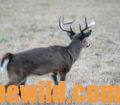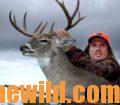Editor’s Note: Grunting, snorting, bleating and other deer sounds are hot tactics in deer hunting. There’s nothing mystical about deer calling – it’s simply using the sounds deer normally make in the woods to entice them to come near your stand. These techniques, even when mastered, aren’t a cure-all for hunting woes but are other strategies the serious, well-prepared hunter can pull from his bag of tricks to hunt smarter. What’s a hunter saying to a deer when he blows a call? What calls are the most effective? What is communicated by the different sounds that the hunter attempts to imitate? Almost every hunter and call manufacturer has speculated about these questions and their answers. Dr. Larry Marchinton, the former head of the University of Georgia’s Deer Research Project, shares his research on deer vocalization this week.
“I believe that hunters are now beginning to understand and effectively use deer calls,” Marchinton emphasizes. “Whether we’ll ever reach the level of communication that a duck hunter has when he calls in a flight of ducks is still speculative. Remember, deer have bigger brains than ducks and are not fooled 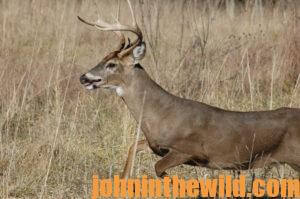 quite as easily.”
quite as easily.”
Besides being a deer researcher, Dr. Marchinton also has been and still is an avid deer hunter. When asked if he uses deer calls, he answers, “Occasionally. I play with all the calls to see what kinds of results I’ll get. But the call I utilize most is the tending grunt. I use my mouth to call deer most of the time rather than commercial calls.
“I also use deer calls in conjunction with rattling. A call that I feel can be very effective is what I call the straining grunt. Hunters acquainted with the rattling technique of hunting deer understand that clashing the antlers simulates two bucks fighting. And, from observing bucks fighting, I know they give off a grunting sound similar to that made by linemen when they try to push and shove each other out of the way to make a hole for the running back. So, I call this grunt the straining grunt, which is a deep, guttural sound that’s somewhere between a roar and a grunt. Although I’ve called deer in using this call, I’m sure at other times I’ve run deer off with it. The key to using this grunt successfully is to put a strained sound in the call. A hunter must realize that this 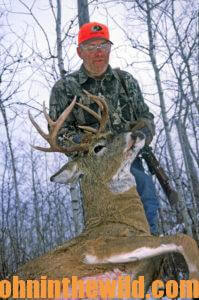 call may scare-off any deer except the most-dominant buck in an area.
call may scare-off any deer except the most-dominant buck in an area.
“Scientists are learning so much about calling deer even today that we’re just at the point now to be able to ask better questions to find out what we don’t understand. However, biologists do know that deer calling is not a surefire way to always bring in bucks. But, calling is effective at times. I frequently use it when hunting.
“The key to successful deer calling is to use the correct call, at the right time of the year. For instance, the most-effective time to use the tending grunt is during breeding season. In the early part of hunting season, if you want to call in a doe, then common sense tells you to use some fawn-in-distress contact calls. If you’re hunting in an area where the buck and doe ratio is so out of balance that there aren’t many bucks, and you want to harvest a doe, then rattle. In regions with few bucks but numerous does, the does will respond to anything that sounds like a buck, especially in the latter part of the season. However, calling-in bucks is extremely difficult when there are more bucks than does.
“Where there is a more-balanced buck/doe ratio, and some older bucks are in the herd, then rattling becomes a very-effective way to call in one. Or, you can use the tending grunt in these places, especially after most of the does have been bred, to call in a buck. Many areas of the nation have deer herds so out of balance, that there are far more does than bucks. So often, the bucks in these regions don’t respond to any form of calling nearly as well.”
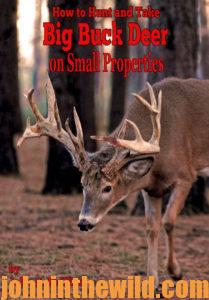 To learn more about hunting deer, check out John E. Phillips’ book, “How to Hunt and Take Big Buck Deer on Small Properties,” available in Kindle, print and Audible versions at (http://amzn.to/1vIcj4m).
To learn more about hunting deer, check out John E. Phillips’ book, “How to Hunt and Take Big Buck Deer on Small Properties,” available in Kindle, print and Audible versions at (http://amzn.to/1vIcj4m).
Tomorrow: Why and When to Rattle to Deer

